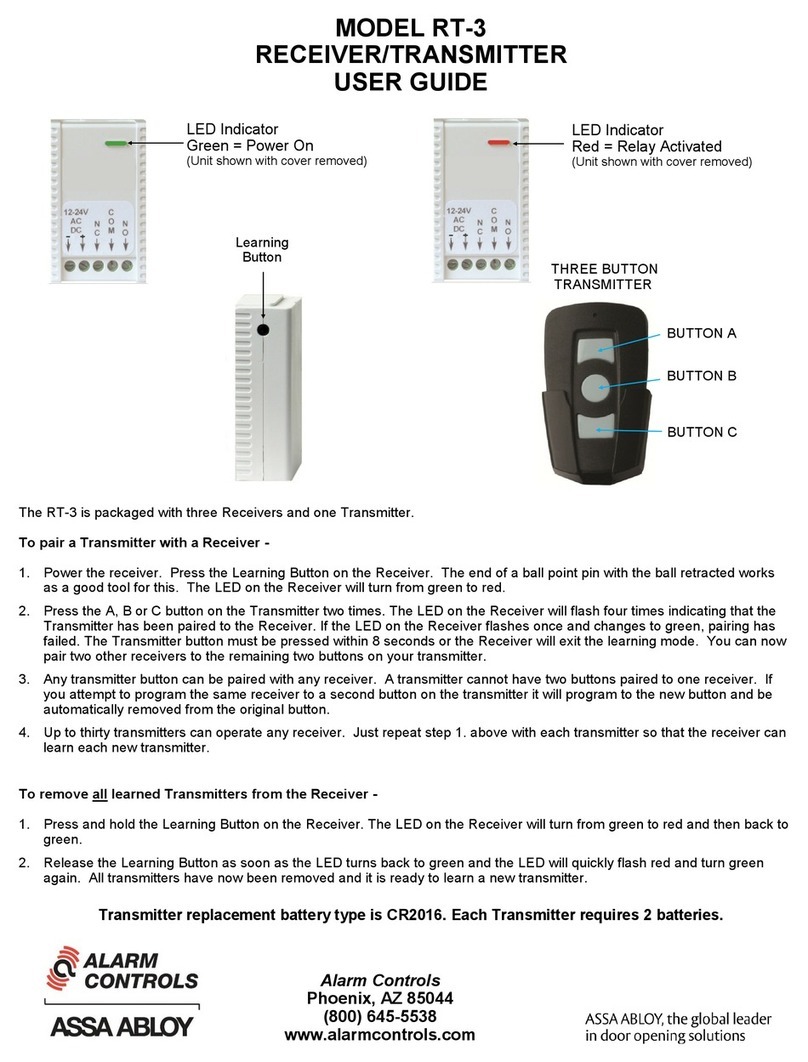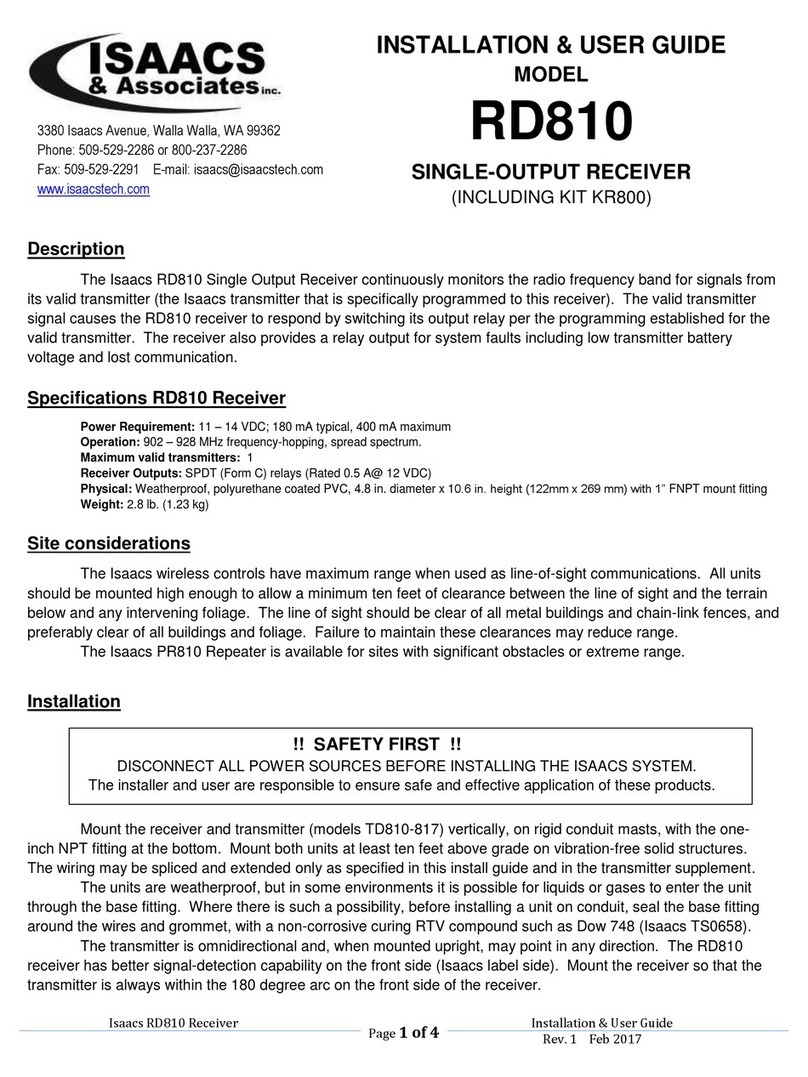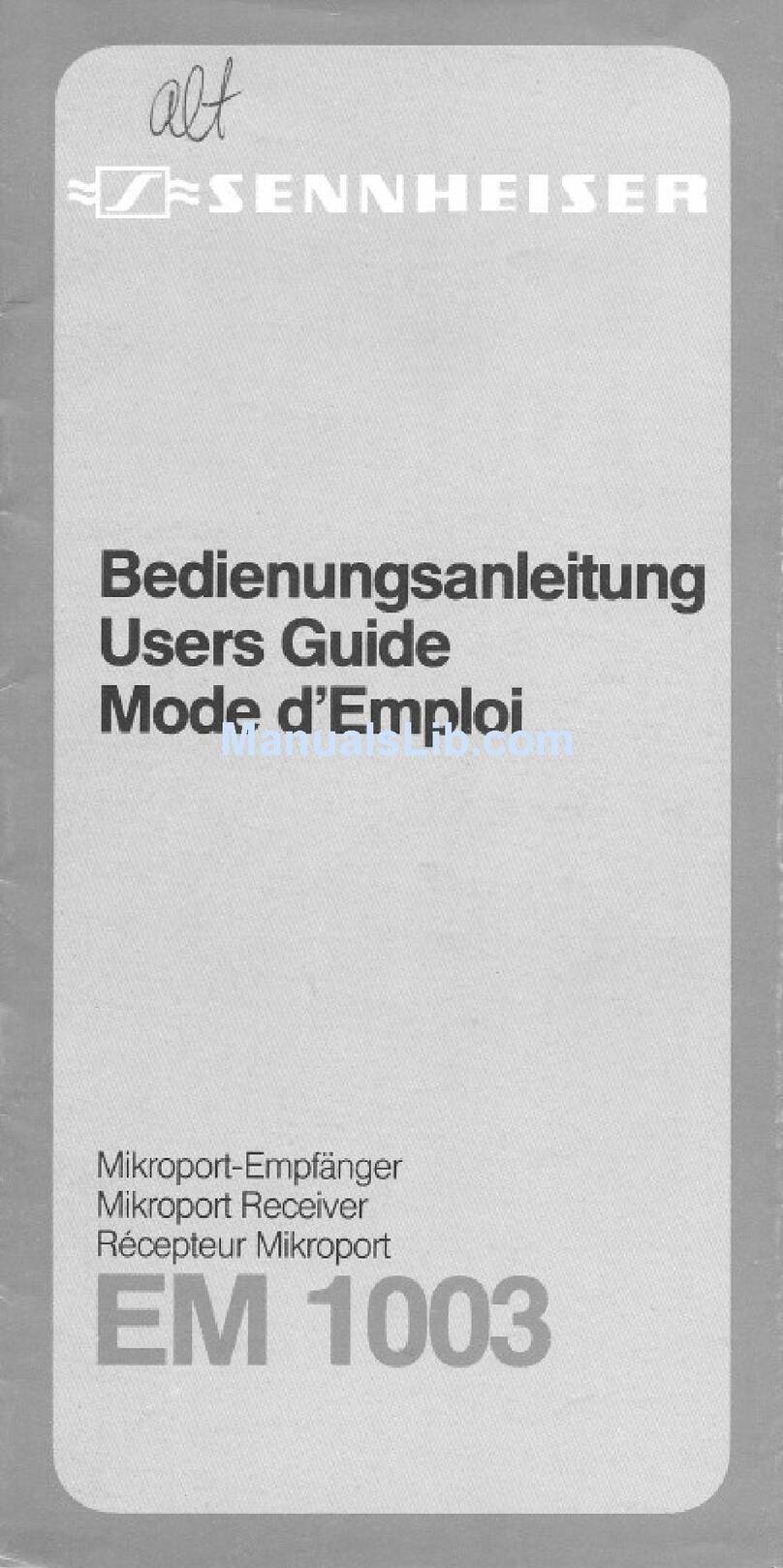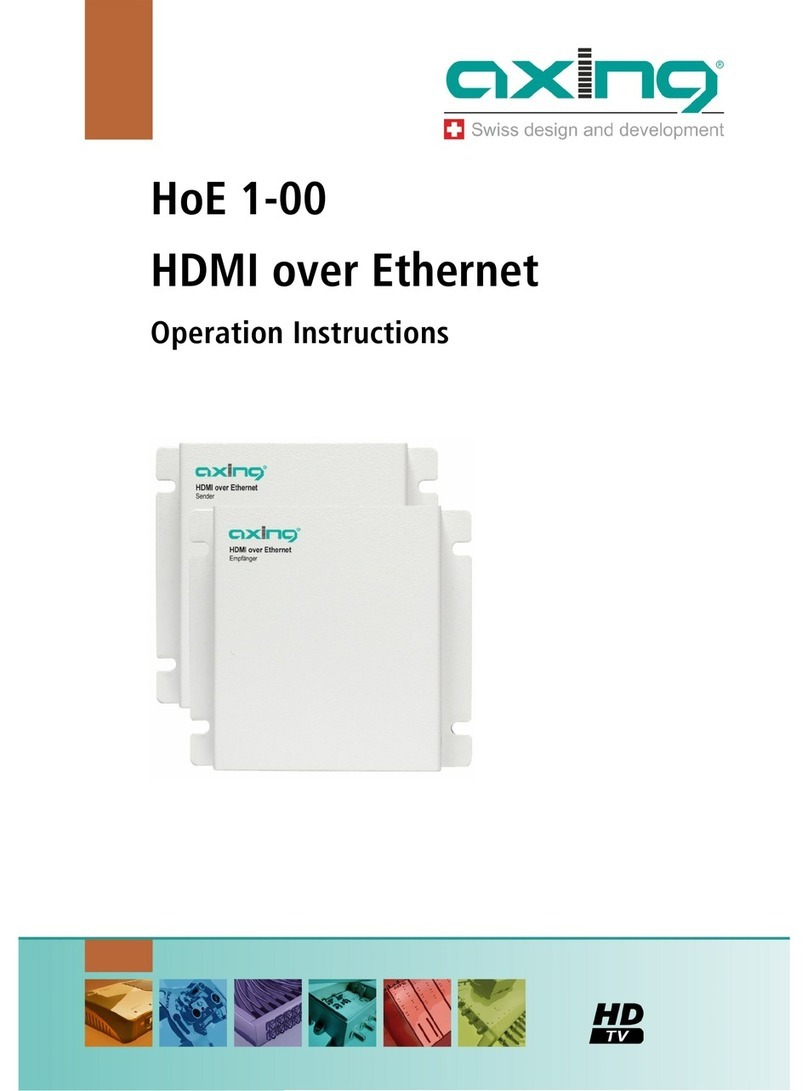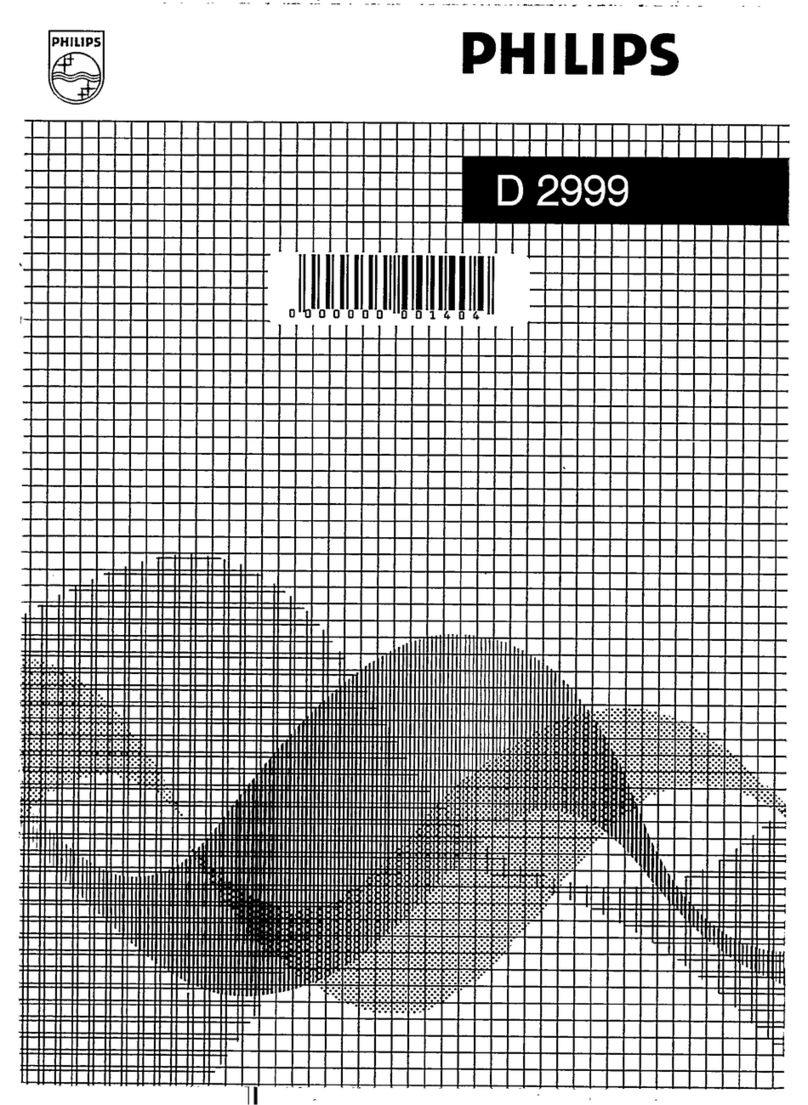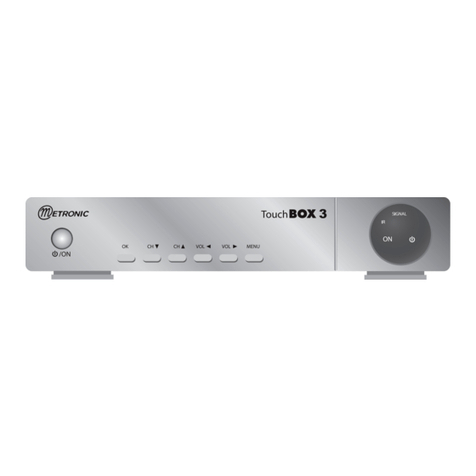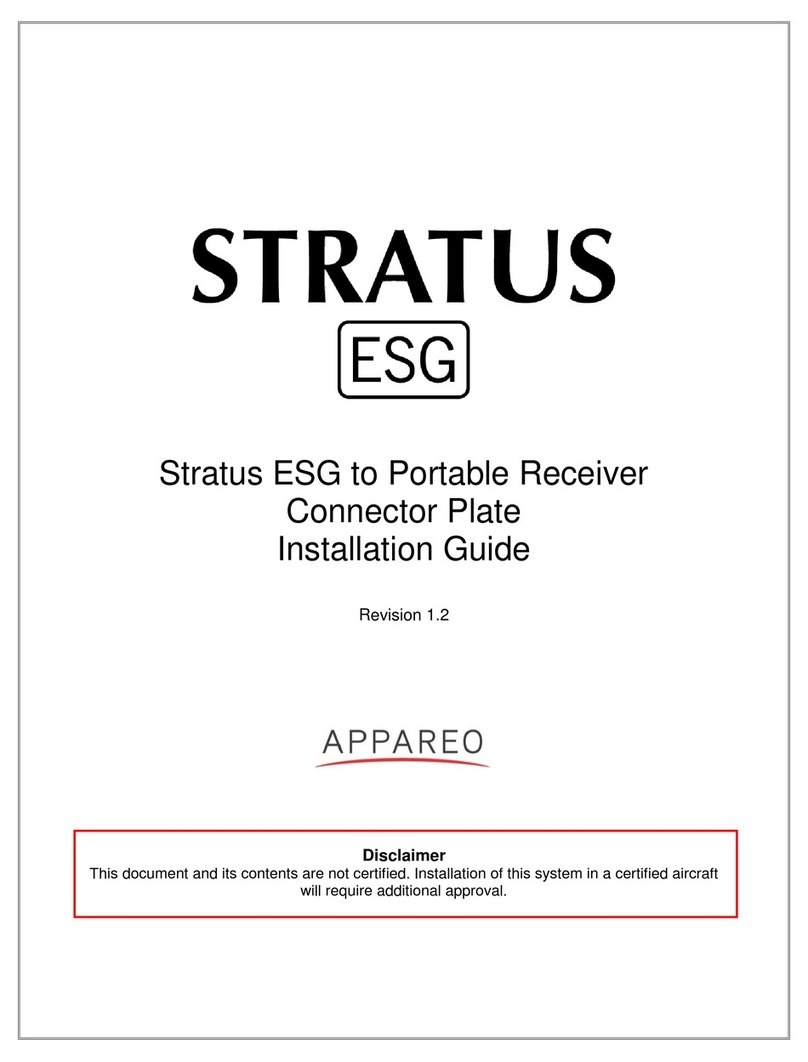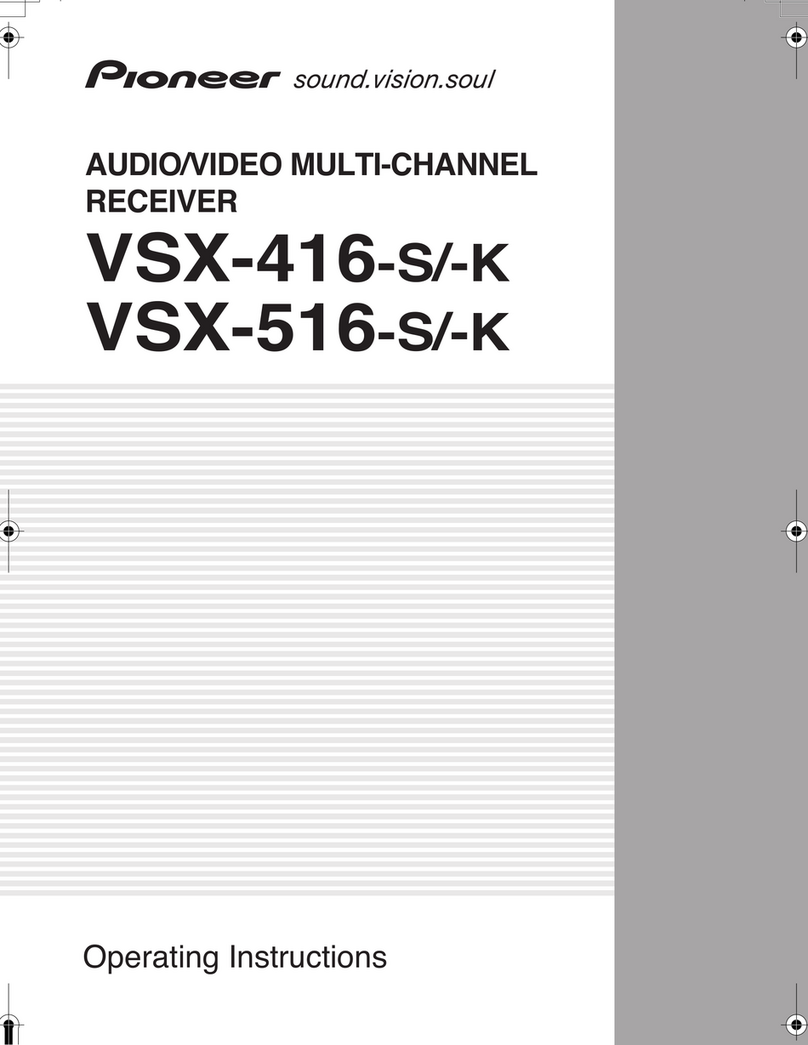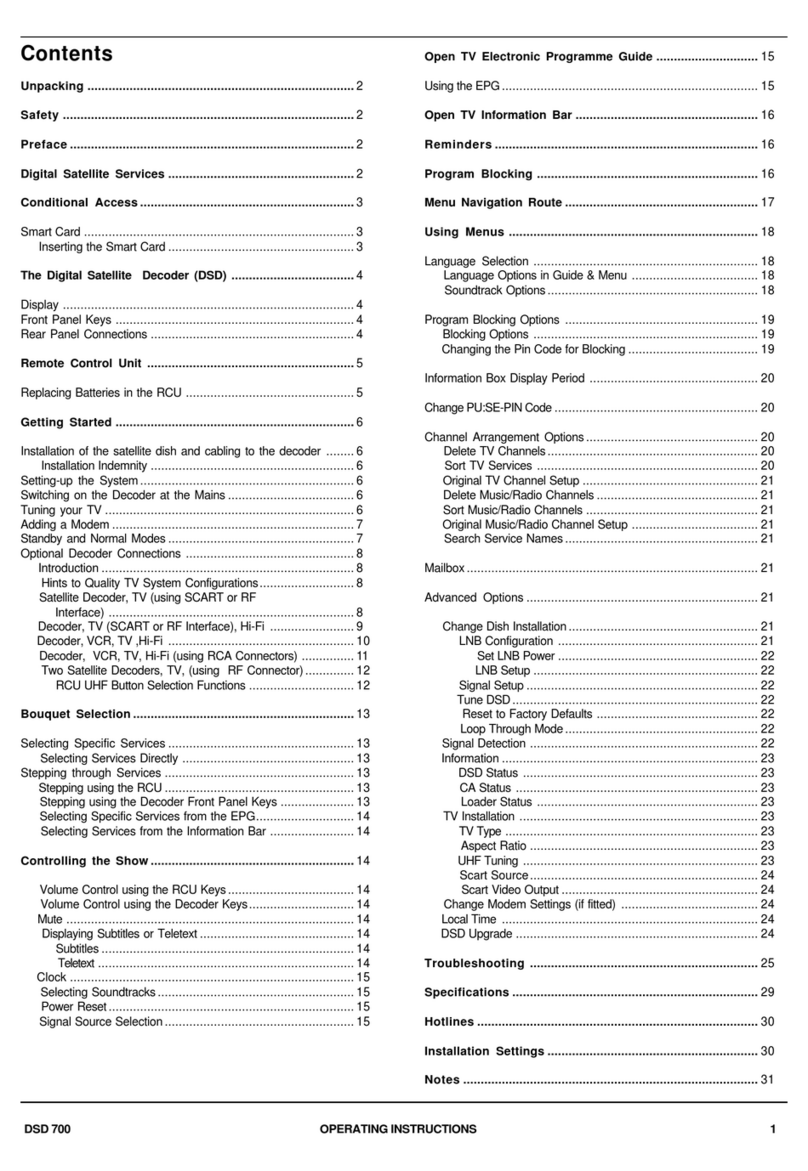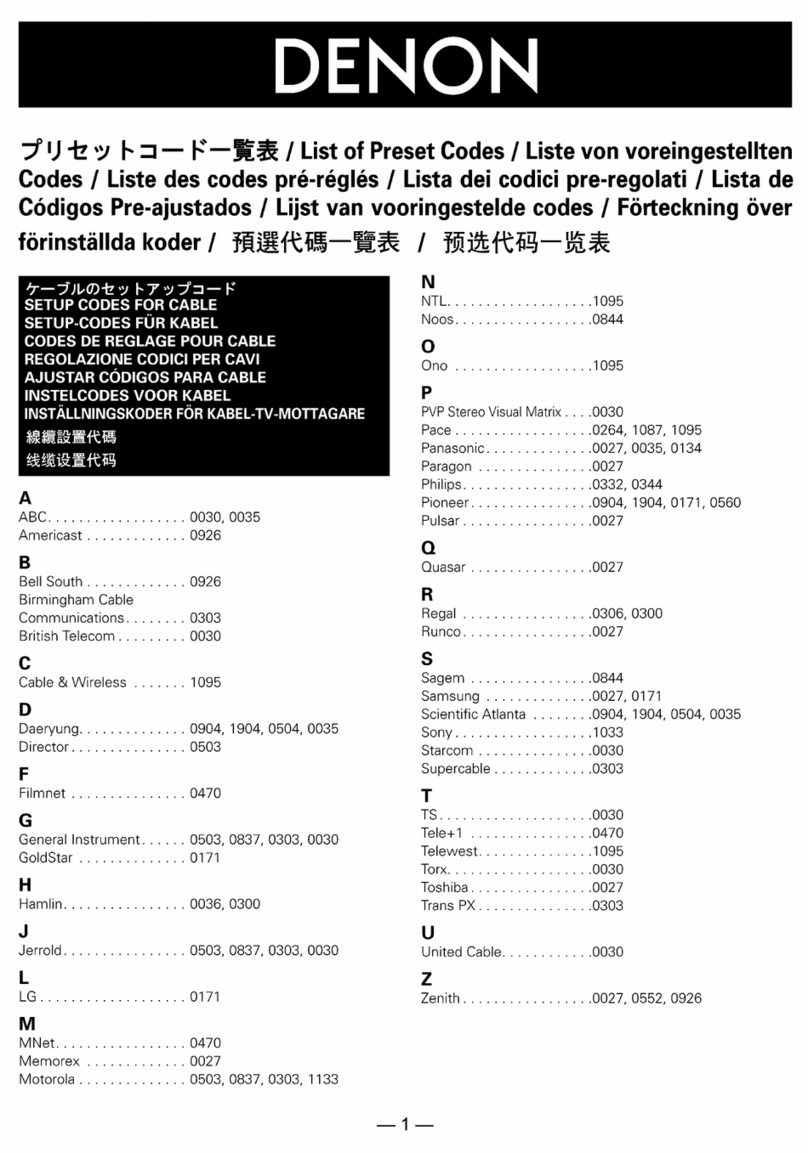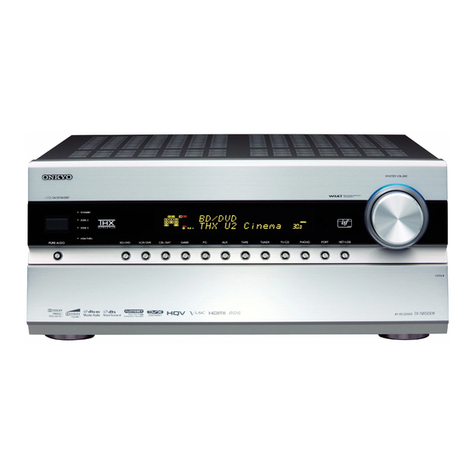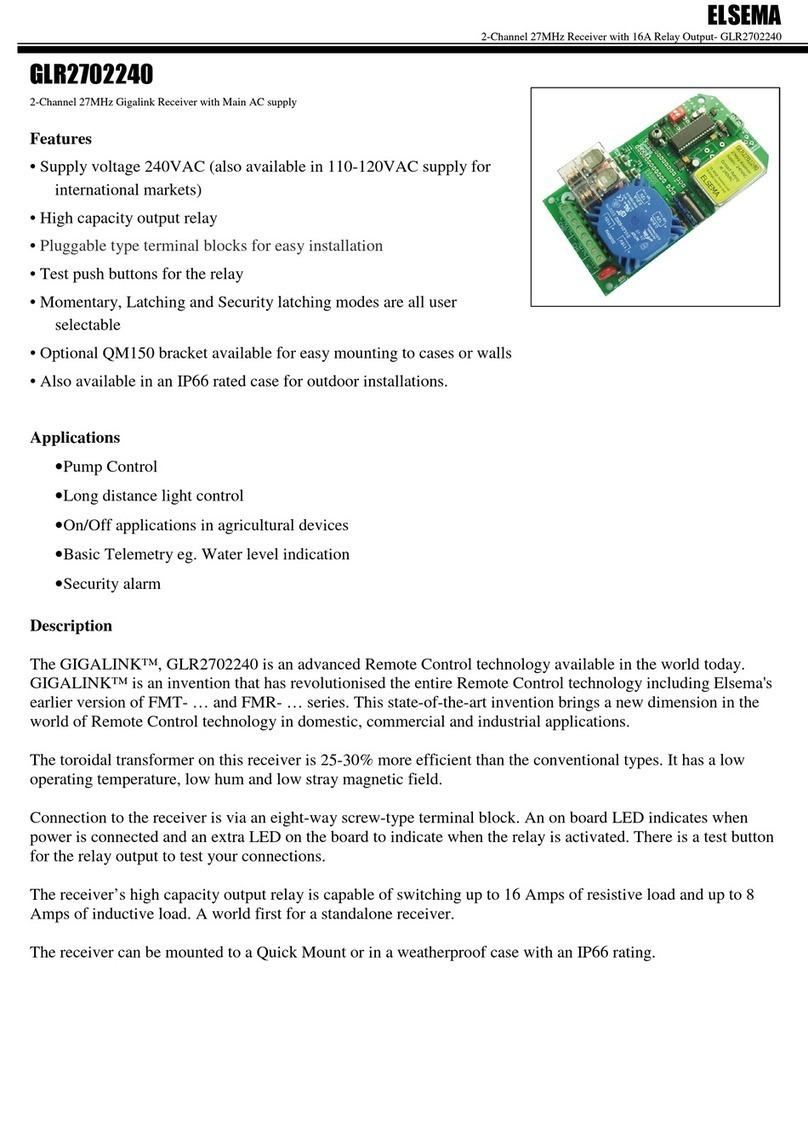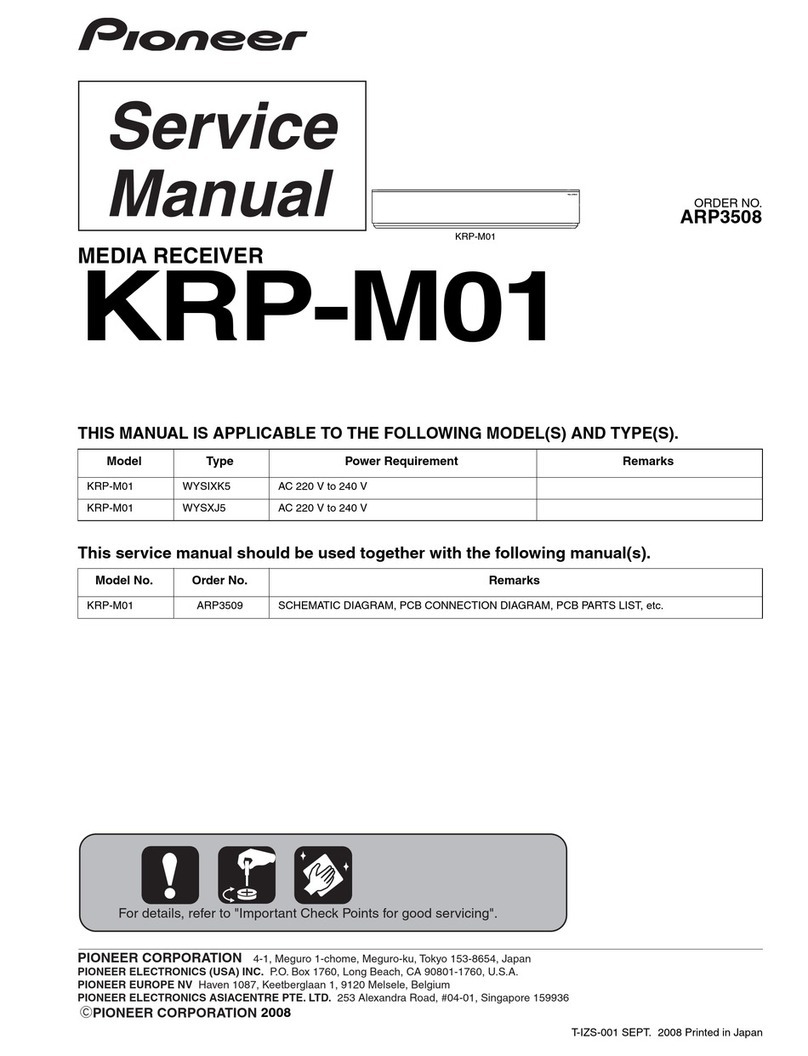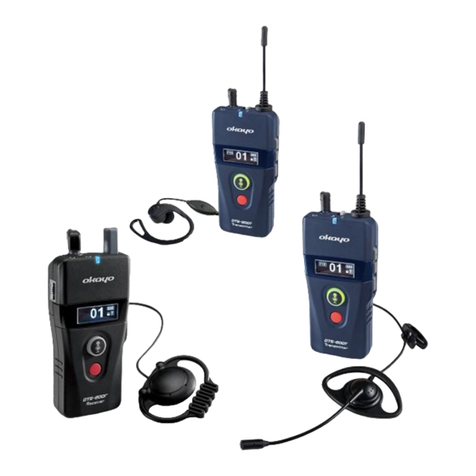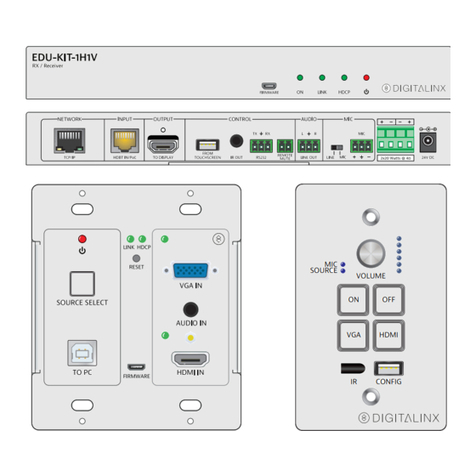3scort BA-BLE 5.0 LR User manual

BA-BLE 5.0 LR
User Manual
ТЕМГ.431213.001 РЭ
Edt. 2022/02-24
Technical support:
+7 800 777 16 03 (24/7)
+7 495 108 68 33 (from 9 am
to 6 pm MSK)
fmeter.ru
support@fmeter.ru

ESCORT. BLUETOOTH BASE BA-BLE 5.0 LR
User Manual 2022.02-24. Page 2 of 38
CONTENTS
TABLE OF CONTENTS
CONTENTS 2
OPERATING MODES DESCRIPTION 3
1.1 Device use 3
1.2 Datasheet 4
2 DEVICE CONFIGURATION AND OPERATION 6
General guidelines 6
2.2 Installation 6
2.3 BA-BLE configuration via mobile app 8
Starting the configuration 8
Connecting and disconnecting BLE sensors with BA-BLE 11
Data transmission from BA-BLE via the RS-232 and RS-485 wired interfaces 13
2.4. RS-232 modes with data output examples 18
Data of all paired sensors in the LLS format (ASCII strings) 18
Total fuel reading and averaged temperature reading of all TD-BLE sensors in different tanks22
Average fuel reading and averaged temperature reading of TD-BLE sensors in the same tank 23
Data of each sensor separately 25
Data of all paired sensors 25
2.5. Setting and deleting BA-BLE's password 28
2.6. BA-BLE firmware update 30
3 LIST OF EQUIPMENT AND SOFTWARE 34
4 SERVICE AND SHELF LIFE, WARRANTY 35
5 TRANSPORTATION AND STORAGE 36
6 DISPOSAL AND RECYCLING 37
7 LINKS 37
8 CONTACTS 37
Appendix 1. Wiring diagram 38

ESCORT. BLUETOOTH BASE BA-BLE 5.0 LR
User Manual 2022.02-24. Page 3 of 38
1OPERATING MODES DESCRIPTION
1.1 Device use
Wired BLUETOOTH BASE BA-BLE 5.0 LR (hereinafter - BA-BLE, or Device) is designed to function
as a Bluetooth receiver capable of collecting the data received from up to 10 BLE sensors paired with
it and of the ID numbers of up to 30 BLE tags saved in its memory - and further retransmitting the
collected data via Bluetooth to a smartphone with the Escort Configurator app installed on it or to a
GPS tracker/gateway via RS-232 and RS-485 wired interfaces in accordance with the LLS data
communication protocol.
The BA-BLE is a device that is used to collect the data transmitted by various BLE sensors
installed on a vehicle or stationary unit and retransmit it to a monitoring device or system.
BA-BLE use examples:
−Fuel monitoring on a vehicle along with the Escort TD-BLE sensors
−Temperature and humidity monitoring along with the Escort TH-BLE sensors
−Monitoring of machinery units’ activities or state (hatch opening, excavator’s arm
moving, concrete mixer revolving, etc.) along with the Escort DU-BLE sensors
To learn more about the sensors use this link: https://www.fmeter.ru/en/produktsiya/

ESCORT. BLUETOOTH BASE BA-BLE 5.0 LR.
User Manual 2022.02-24. Page 4 of 38
1.2 Datasheet
The main technical specifications are stated in the Table 1 below.
Table 1. BA-BLE Technical specs
Spec
Value
Power supply voltage, V
9 ... 36
Power consumption, not more than (mA)
50
Communication interfaces (for connection with GPS
trackers/gateways)
Data exchange protocol
Data exchange baud rate
RS-485, RS-232
LLS
19200 bps
Sensor/tag communication interface
Data exchange protocol
Bluetooth LE (BLE)
ESCORT BLUETOOTH BASE BA-BLE 5.0
LR
Bluetooth Standard
Bluetooth Low Energy 5 LR
coded PHY (central)
Bluetooth Low Energy 4
(connection, advertising)
Receiver sensitivity / transmitter power, dBm
-96 / 8
Operating frequencies, GHz
2.402 … -2.480
Maximum number of connectable sensors:
10
Maximum number of LLS network addresses:
40
Ingress protection marking in accordance with ГОСТ
(State Standard) 14254
IP67
Electric shock resistance rating in accordance with ГОСТ
(State Standard) 12.2.007.0
Class III
Operating conditions:
- ambient temperature, °С
- min and max ambient temperature, °С
- atmosphere pressure, kPa
- from -40 °С to 50 °С
- from -40 °С to 85 °С
84 ... 106.7
Dimensions, not more than, mm
90,4 x 50,5 x 17
Weight, not more than, kg
0.2

ESCORT. BLUETOOTH BASE BA-BLE 5.0 LR
User Manual 2022.02-24. Page 5 of 38
1.3 BA-BLE design
The BA-BLE’s design is displayed on Fig. 1.
Fig. 1 Bluetooth Base BA-BLE 5.0 LR
1.4 BA-BLE scope of delivery
The scope of delivery is stated in the Table 2.
Table 2. The kit contents
Device code designation:
Device designation:
Qty
S/
N
Note
ТЕМГ.422133.001
Wired BLUETOOTH BASE BA-
BLE 5.0 LR
1
ТЕМГ.422133.001 ПС
Wired BLUETOOTH BASE BA-
BLE 5.0 LR Datasheet
1
Installation kit:
Self-tapping screw 4.2x2.5
Plastic strap 3x150 mm
1
2
2
Packaging
1

ESCORT. BLUETOOTH BASE BA-BLE 5.0 LR.
User Manual 2022.02-24. Page 6 of 38
2 DEVICE CONFIGURATION AND OPERATION
2.1 General guidelines
- BA-BLE must be operated in accordance with the following documents:
-“BLUETOOTH BASE BA-BLE 5.0 LR. ТЕМГ.422133.001 РЭ” – BLUETOOTH BASE BA-BLE 5.0 LR User
Manual (the present document)
- “BLUETOOTH BASE BA-BLE 5.0 LR. ТЕМГ.422133.001 ПС” – BA-BLE 5.0 LR Datasheet
- The company or an individual that has purchased the Device must ensure that the Device is stored,
installed and operated in accordance with the requirements stated in the Datasheet and User Manual
of the Device.
- The Device must be installed and operated only by the authorized staff who have read the Datasheet
and User Manual.
- After the Device has been exposed to the temperatures that exceeded the range indicated in the
present document and in the Datasheet of the Device during its storage or delivery, make sure to put
it into a room with the normal operating temperatures and wait for 4 hours before unpacking and
switching on the Device. After unpacking the Device, it is required to check the presence of all items of
the installation kit in the package as well as to examine the sensor for any signs of damage.
- The warranty service for the BA-BLE is to be provided by the manufacturer.
DO NOT USE THE DEVICE UNDER THE OPERATING CONDITIONS DIFFERENT FROM THE ONES
STATED IN THE DATASHEET OF THE DEVICE AND IN THE ART 1.2 OF THE USER MANUAL!
AVOID ANY DAMAGE TO THE DEVICE, ITS PARTS OR WIRES DURING THE INSTALLATION AND
OPERATION!
- The sensor is not subject to any repairs by a customer and must be sent to the manufacturer for
repairs or replacement in case of a malfunction.
2.2 Installation
In case the BA-BLE is to be installed on a vehicle, the most common way to do so is to place it
next to the backseat window inside the vehicle’s cab and fix it onto a vertical surface by means of self-
tapping screws.
When installing the Device it is vital to take the following steps:
—RSSI (Received Signal Strength Indicator) check: the average RSSI relevant to every
sensor paired with the BA-BLE and displayed in the Escort Configurator app must be higher than -80

ESCORT. BLUETOOTH BASE BA-BLE 5.0 LR
User Manual 2022.02-24. Page 7 of 38
dBm; the average value must calculated over the course of 2-3 minutes with engine running and all
electronic devices present in and around the cab switched on;
—The antennae of the Device and of the sensor(s) must be directed towards each other
(Fig. 2).
Figure 2 displays the orientation of the BA-BLE and an external BLE device (ID-TAG is used as an
example) as well as the wiring diagram for power, RS-485 and RS-232 connection.
Fig. 2 –BA-BLE orientation and wiring
(Escort ID-TAG is used as an example of an external BLE device)
Wires: Purple/violet –RS-232 RX, Green –RS-232 TX,
Orange –RS-485 A (+), White –RS-485 B (-).
Black –GND “–“, Red – PWR “+”
The Device is fixed with self-tapping screws from the installation kit. Drill orifices for the screws
using a Ø2-2.5 mm bit beforehand if necessary. The Device's design dimensions and fitting dimensions
are shown on the Figure 3.

ESCORT. BLUETOOTH BASE BA-BLE 5.0 LR.
User Manual 2022.02-24. Page 8 of 38
Fig. 3 BA-BLE design dimensions and fitting dimensions
2.3 BA-BLE configuration via mobile app
To connect and configure the BA-BLE via the Escort Configurator mobile app, do the following.
Starting the configuration
2.3.1 Connect the BA-BLE to a 12-36 V power supply (Fig. 2).
2.3.2 Make sure that your smartphone supports BLUETOOTH LE (BLE 4.0 or higher) by checking
its documents and manuals. Activate the Bluetooth of your smartphone.
2.3.3 Install and run the Escort Configurator mobile app of version 1.0.50 or newer.
Activate the Bluetooth and the geolocation of your smartphone (Fig. 4). The app must have
access to the geolocation due to the requirements of the AppStore and GooglePlay (Fig. 5).
When firing the app up for the 1st time, make sure to give it access to the geolocation service.
This access is asked for only once. This step is obligatory to connect any BLE devices.

ESCORT. BLUETOOTH BASE BA-BLE 5.0 LR
User Manual 2022.02-24. Page 9 of 38
Fig. 4 GPS (geolocation) and Bluetooth activated
Fig. 5 Location permissions
2.3.4 On the start screen (Fig. 6) select «Sensor Settings» and select the connection type if using
an Android OS device (“Bluetooth” is selected by default). Scroll down if necessary and select the
device type “Adapter BA-BLE” (Fig. 7).

ESCORT. BLUETOOTH BASE BA-BLE 5.0 LR.
User Manual 2022.02-24. Page 10 of 38
Fig. 6 Start screen
Fig. 7 Selecting connection and device type
2.3.5 Next, find the base you need on the list of the detected devices (Fig. 8), alternatively, enter
the serial number of the BA-BLE you need to configure into the search box; the serial number is
indicated on the Device itself, for instance, BA_100039).
2.3.6 To connect the BA-BLE, press the “Connect” button. If the Device is already protected by
a previously set password, you will be required to enter that password. “The device is password-
protected” message will inform you that there is a password (Fig. 9). Enter the password and press
“Ok”. Initially, there should be no password. When you connect the Device for the 1st time, you will
be required to set up a new password.
Setting the password is obligatory. If the device is not password-protected, any third party can
change its configuration by means of the Escort Configurator app.

ESCORT. BLUETOOTH BASE BA-BLE 5.0 LR
User Manual 2022.02-24. Page 11 of 38
Fig. 8 List of available devices
Fig. 9 Device’s current data
2.3.7 Once the Device is connected, you will see the menu with its current data (Fig. 10). Here
you can pair a new sensor with the BA-BLE by pressing the “+” or delete a paired sensor.
Connecting and disconnecting BLE sensors with BA-BLE
2.3.9 Once you press the “+” button, you will be asked to enter the BA-BLE password (Fig. 10).
Enter the password (it can be 10-digit long) and press “Enter”.
Then press the “+” button again. You will be asked to enter the MAC address or the name of
the sensor (Fig. 12).
Important. The sensor can be paired either by its MAC address or by its name. In other words,
if you entered the MAC address, the BA-BLE will be searching for the sensor’s data by its MAC address.
The MAC address must be entered as follows: FF:FF:FF:FF:FF:FF (the ‘:’ signs are obligatory).
The formatting must correspond to the example on the Figure 11. The sensor’s MAC address
can be found on its head (Fig. 12).
To pair the sensor by its name, enter the first letter of the sensor’s model and the last 6 digits
of its serial number - for example, TD_151815 - and press “Connect”.
After the sensor is paired by its MAC address or name, you will see a message that informs of
the sensor being successfully paired with the Device (Fig. 13). Then the current readings received from
the paired sensor will be displayed in the main menu of the BA-BLE.

ESCORT. BLUETOOTH BASE BA-BLE 5.0 LR.
User Manual 2022.02-24. Page 12 of 38
Fig. 10 Pairing sensor with BA-BLE
Fig. 11 Pairing sensor with BA-BLE by
its MAC
Fig. 12 Sensor’s MAC address
Fig. 13 Sensor successfully paired

ESCORT. BLUETOOTH BASE BA-BLE 5.0 LR
User Manual 2022.02-24. Page 13 of 38
2.3.10 To delete a sensor, press and hold on it and swipe to the left, the Remove button will
appear on the right, tap on it and the sensor will be deleted (Fig. 14). Next, confirm your action by
pressing the Disconnect button (Fig. 15) .
Fig. 14 Deleting a sensor from BA-BLE
memory
Fig. 15 Deleting a sensor from BA-BLE
memory
Data transmission from BA-BLE via the RS-232 and RS-485 wired interfaces
2.3.11 The data can be requested from the BA-BLA via the RS-232 and RS-485 interfaces in
accordance with the LLS communication protocol. To configure the RS-232 and RS-485 interfaces, press
on one of the sensors (Fig. 16) and then press the RS-232 and RS-485 button (Fig. 17). You will see the
list of the pairs of parameters that can be transmitted by the BA-BLE in response to the requests from
an external device, for example GPS tracker/gateway (Fig. 18).
2.3.12 To switch the transmission of the pair of parameters you need, tap on it to switch the
tumbler to the right.
Next, you will be asked to select a network address via which the activated pair of parameters
will be transmitted to the external device. The network address can be 0...255. Press “Save”to apply
the change. Figure 19 shows an example of the network address 2 being used to transmit the fuel level
and temperature of a TD-BLE sensor in accordance with the LLS protocol. Figure 20 and 21 show the
menu of the parameters and the network addresses used to transmit them.

ESCORT. BLUETOOTH BASE BA-BLE 5.0 LR.
User Manual 2022.02-24. Page 14 of 38
Fig. 16 Tap on a sensor to configure the
transmission of its data via the RS-485/RS-232
Fig. 17 Press ‘RS-232 and RS-485’

ESCORT. BLUETOOTH BASE BA-BLE 5.0 LR
User Manual 2022.02-24. Page 15 of 38
Fig. 18 Pairs of parameters that can be
transmitted via one network address of the RS-
232 and/or RS-485
Fig. 19 Network address 2 selected to transmit
Level and Temperature of the TD-BLE via RS-232
and/or RS-485

ESCORT. BLUETOOTH BASE BA-BLE 5.0 LR.
User Manual 2022.02-24. Page 16 of 38
Fig. 20 One pair of parameters and network
address used to transmit them
Fig. 21 Example of DU-BLE sensor’s parameters
and network addresses used to transmit them to
GPS tracker/gateway (6 and 7)
IMPORTANT! The majority of the GPS trackers/gateways can work with just one sensor
connected via the RS-232 interface if the LLS communication protocol is used to request the data from
the sensor therefore there can be only one sensor paired with the BA-BLE. Also, some
trackers/gateways require the sensor to have the network address 255 (FF in HEX), be sure to assign
the sensor you paired with the BA-BLE the network address 255 when activating the pair of parameters
you need transmitted from the BA-BLE to your tracker/gateway.
Technically, if the manufacturers of the trackers/gateways were willing, they could make it
possible for their devices to be able to poll the data from the BA-BLE via different network addresses.
The same LLS protocol would have to be used to do that.
2.3.13 The BA-BLE can also actively (periodically) retransmit the data of the sensors paired with
it via the RS-232 interface in several selectable modes/formats (Fig. 24) without any requests being
sent from an external device. To activate it, press on the cog sign at the top right corner and then tap
“RS-232 Settings” (Fig. 22 and 23).

ESCORT. BLUETOOTH BASE BA-BLE 5.0 LR
User Manual 2022.02-24. Page 17 of 38
Fig. 22 Opening RS-232 settings menu
Fig. 23 RS-232 mode/format selection, data
transmission interval configuration
Data transmission interval is set in seconds (5 seconds by default). If the BA-BLE received a
request in the LLS format from an external device via the RS-232, the periodic/active transmission is
suspended for the next 10 seconds to avoid any errors.

ESCORT. BLUETOOTH BASE BA-BLE 5.0 LR.
User Manual 2022.02-24. Page 18 of 38
Fig. 24 RS-232 Modes/Formats
After changing any RS-232 settings, be sure to press the Save button to apply the changes.
2.4. RS-232 modes with data output examples
Figure 25 displays the list of the modes of periodic transmission of data in the LLS format.
ATTENTION! For any of the RS-232 periodic modes/formats to work properly, the GPS
tracker/gateway must be configured to work in a so-called ‘Transparent mode’ that allows it to
simply retransmit the data received from the BA-BLE without processing it.
ATTENTION! Be sure to check if the monitoring platform you use is capable of processing the
data packages transmitted by the GPS tracker/gateway in the ‘Transparent mode’ that include the
BA-BLE data output.
Data of all paired sensors in the LLS format (ASCII strings)
If you select the Data of all paired sensors in the LLS format (ASCII strings), the menu of the
sensor will display two separate buttons for RS-485 and RS-232 (Fig. 26):
−RS-232 button for selecting a pair of parameters to be actively/periodically transmitted
in the LLS format via the RS-232.
−RS-485 button opens the LLS network addresses configuration
The sensor parameters menu when the active/periodic transmission of data in the LLS format
via the RS-232 is activated is displayed on Figure 26.

ESCORT. BLUETOOTH BASE BA-BLE 5.0 LR
User Manual 2022.02-24. Page 19 of 38
IMPORTANT! ONLY ONE PAIR OF PARAMETERS PER SENSOR CAN BE INCLUDED INTO THE
ASCII STRINGS OUTPUT BY THE BA-BLE IF YOU SELECT THIS RS-232 MODE!
Be sure to select:
Level and temperature pair for TD-BLE
Angle (Revolutions counter) and Event notification (RPM) for DU-BLE
Temperature and humidity pair for TH-BLE
Fig. 25 Data of all paired sensors in the LLS format (ASCII
strings) format/mode
Fig. 26 Menu with sensor data and RS-232 and RS-485 buttons that opens after you press on one of the
sensors paired with the BA-BLE

ESCORT. BLUETOOTH BASE BA-BLE 5.0 LR.
User Manual 2022.02-24. Page 20 of 38
Fig. 27 Level and Temperature pair activated and to be included into the ASCII string
Table of contents
